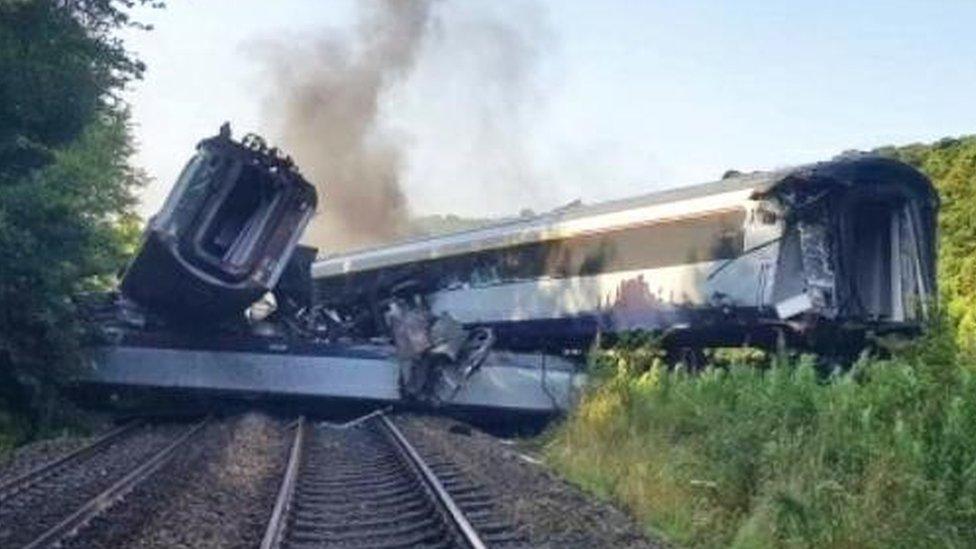Stonehaven derailment: Driver was told 'everything fine' for normal speed
- Published
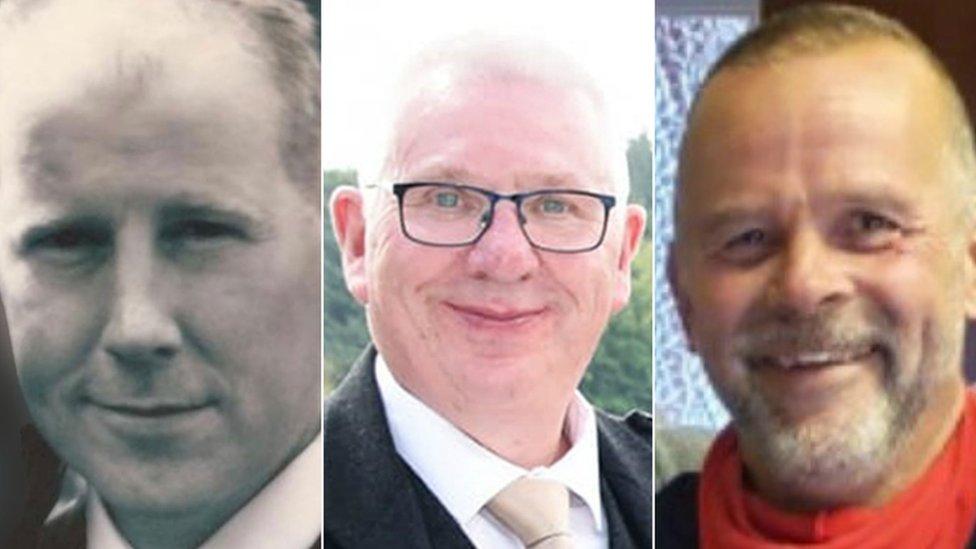
Brett McCullough, Donald Dinnie and Chris Stuchbury died after the train left the tracks
The driver of a train which derailed last year, killing three people, was told he was fine to run at normal speed before the accident, a report has said.
The train had turned back but hit a landslip near Stonehaven in Aberdeenshire after heavy rain.
An interim Rail Accident Investigation Branch report, external said a signaller was not aware of any obstruction on the line.
The driver was only four seconds from impact before the debris could be seen and the emergency brake was too late.
Driver Brett McCullough, 45, conductor Donald Dinnie, 58, and passenger Christopher Stuchbury, 62, died when the 06:38 Aberdeen to Glasgow Queen Street train derailed in August last year.
It had turned back due to another landslip and was returning north.
The report said the signaller advised the driver to traverse a crossover - where a train switches tracks - at 5mph.
It said: "The signaller said that everything was then fine to Stonehaven so the train could run at normal speed to there".
After passing over the crossover, the train's speed increased and, as permitted by railway rules, the driver continued to accelerate the train towards 75mph, the maximum permitted speed at the accident site.
'Obstructed driver's view'
As the signaller was not aware of any obstruction on the line, railway rules did not require him to instruct the driver to travel at a speed slower than the maximum normally permitted.
The report said data from the on-train data recorder (OTDR) showed it was travelling at about 73mph as it approached the washout debris at Carmont.
The left-hand curve on the approach obstructed the driver's view of the debris until the train was about 120m (394ft) from it. The train covered this distance in less than four seconds.
Although the OTDR recorded an application of the emergency brake, there was "insufficient time for this to have had any significant effect on the train's speed before it struck the debris".
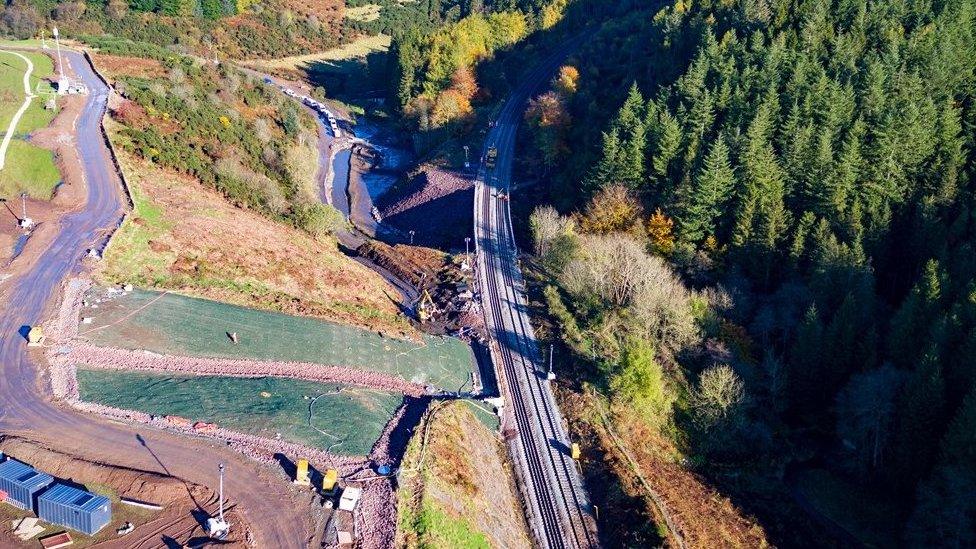
The line at the scene of the crash was repaired and reopened to trains in November
Six other people were injured.
The report also said no evidence had been found that part of a drainage system near the derailment was inspected between its construction in 2012 and the 2020 accident.
Only the section closest to the track was listed on Network Rail's drain maintenance database.
The RAIB said the design and construction of the drain, plus the "intended and actual" inspection processes, were among the main areas it considered as part of its investigation.
'Lessons are learned'
Network Rail chief executive Andrew Haines said: "We remain absolutely committed to learning lessons from the tragedy last summer that cost the lives of Brett McCullough, Christopher Stuchbury and Donald Dinnie.
"We welcome RAIB's interim report and we continue to cooperate with all ongoing investigations as we seek to understand what happened.
"We are being guided by world-renowned experts as we tackle one of our biggest challenges, adapting our transport system to cope with the long term changes in weather in the face of a rapidly changing climate."
Transport Secretary Grant Shapps said: "My thoughts remain with the families of Brett McCullough, Donald Dinnie and Christopher Stuchbury, who tragically lost their lives.
"This interim report highlights the extensive work that RAIB have been undertaking to understand the causes of this accident. I look forward to receiving the full findings in due course, to ensure lessons are learned from this tragedy."
The line at the scene of the crash was reopened to trains in November following repairs.
Related topics
- Published17 March 2021

- Published3 November 2020
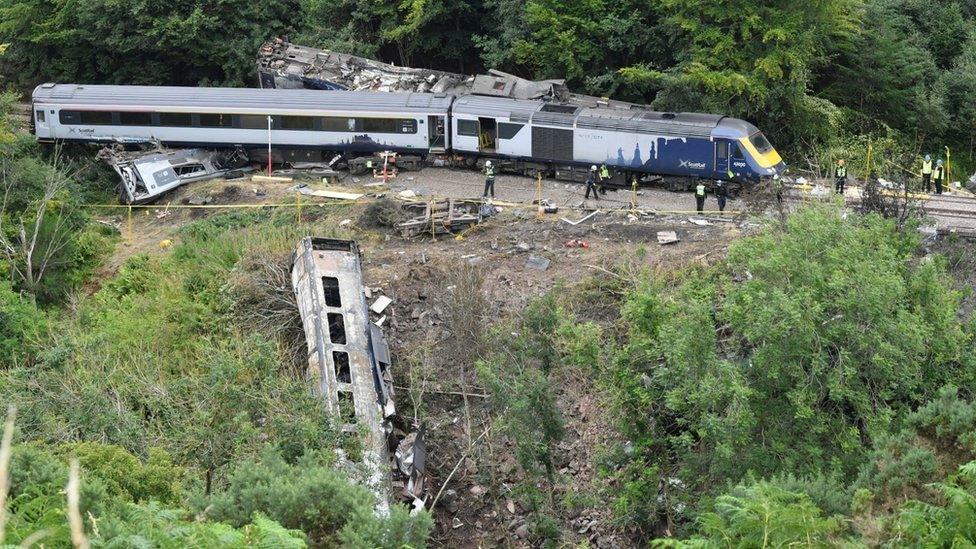
- Published16 October 2020
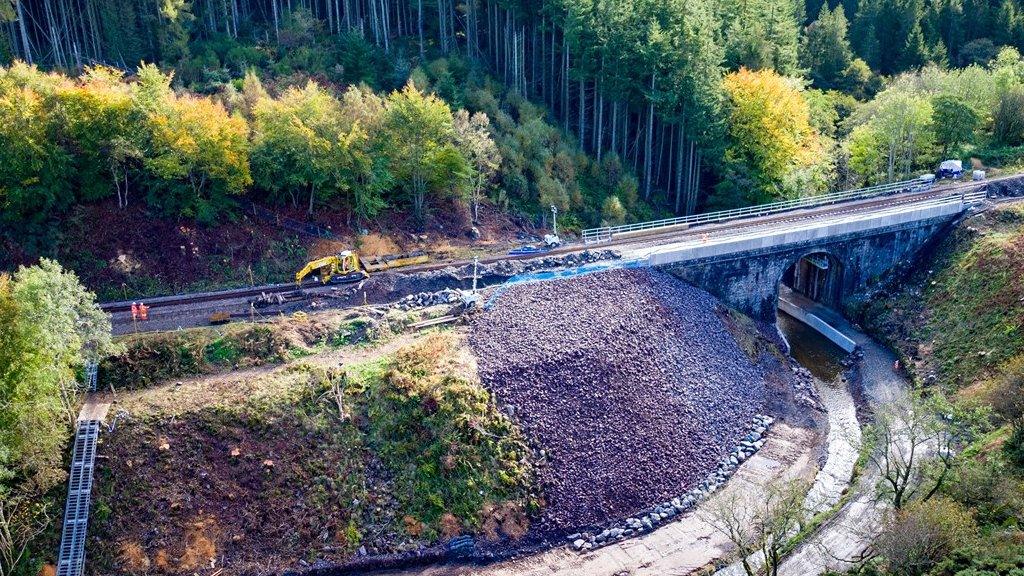
- Published10 September 2020
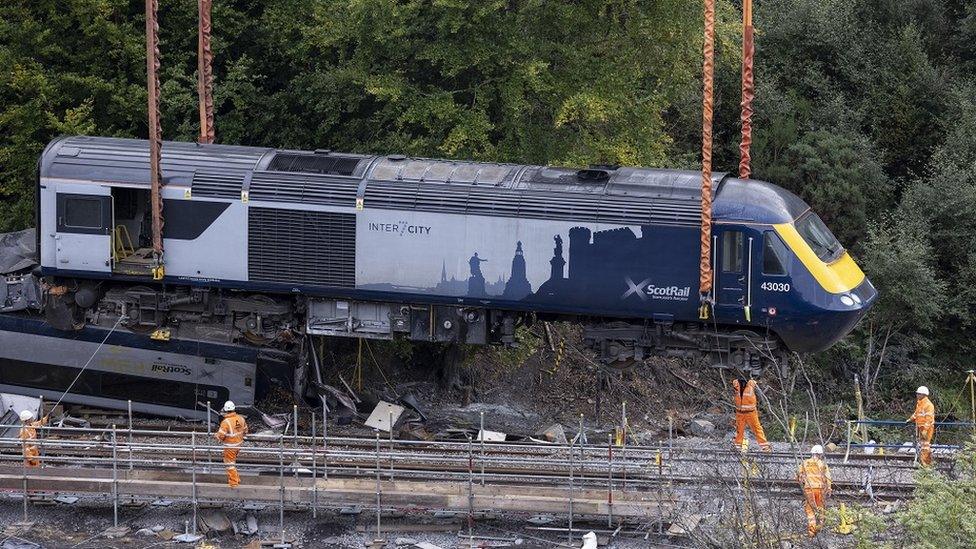
- Published7 September 2020

- Published12 August 2020
